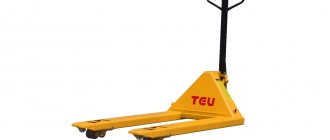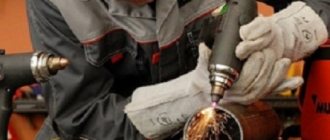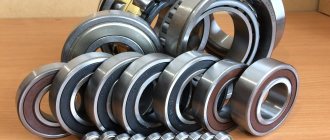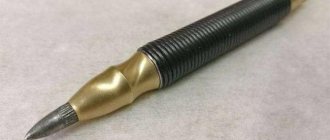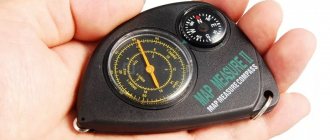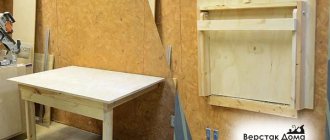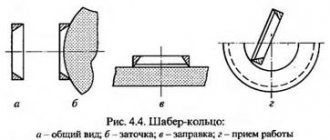Pallet trucks are one of the main assistants for modern warehouse operators. They allow you to manually move cargo on pallets weighing up to 5 tons without much physical effort. These devices are successfully used for loading and unloading vehicles, processing materials and finished products in stores, manufacturing and many other enterprises.
Today there are a huge number of modifications of hydraulic trolleys. They can be low profile, with long, short or wide forks. Recently, models with built-in scales that simultaneously move and weigh loads have been gaining popularity.
What does it mean
Until the sixties of the twentieth century, loaders worked in warehouses, manually carrying and lifting heavy loads onto racks. Labor productivity was very low. It was impossible to quickly unload goods that weighed more than 1 ton. Therefore, at the end of the forties of the twentieth century, foreign companies invented and released the first models of rokhli, which quickly gained popularity all over the world. Today, large warehouses, industrial areas and shops are filled with devices of various modifications and manufacturers from different countries.
The global market presents equipment with a variety of functional features:
- • With low and high load capacity from 2 to 5 tons.
- • With small or large villas.
- • With single or double wheels.
- • Lifting with legs.
- • Electrically driven.
Recently, products with improved designs have been produced with electronic scales and label printers.
Hydraulic rokla or rokhla: what is the correct name?
In the sixties of the twentieth century, the name came from the Finnish company Rocla Oy. Models from this manufacturer began to arrive in the USSR and were sent to warehouses to help auxiliary workers, who found it easier and simpler to pronounce the word “rohlya” than “hydraulic trolley.”
Historical reference
Finnish manufacturers did not have time to produce the required number of fork carts, so the Soviet Union entered into contracts for the supply of equipment with Bulgaria. Until the collapse of the USSR (1991), Bulgarian, Skladova Tekhnika, Yantra, Simetro imported transporters.
In the early 90s of the last century, models from other countries, such as Denmark, England, Italy and Germany, began to arrive in the Russian Federation. But Russia had to abandon their goods due to the high cost.
At the beginning of the 21st century, major changes occurred in the world economy, and European companies had to replace the production of simple hydraulic carts with more high-tech units. And the production of old equipment was established in Asian countries where there is cheap labor. The PRC has also organized its own concerns. Therefore, the price of products varies greatly and depends on the supplier.
Forklift Brands Today
When choosing and purchasing equipment for loading goods, you should pay attention not only to the cost, but also to the country of manufacture. Defective products are often found when counterfeiting well-known European and American brands. But if the equipment passes the quality control department and is controlled by the shareholders of famous companies, then it reaches the market without complaints from buyers.
For example, the Chinese company Noblelift Equipment, together with the Americans, produces the NOBLIFT model, which will be much cheaper in cost than a similar product from the USA.
We will show you the percentage of transporters purchased by different manufacturers:
- • 20% of consumers purchase carts from China and other Asian countries, as they are attracted by the very low price. Grost is the most popular.
- • European models Lema Engineering, Otto-Kurtbach were in first place in demand (70%) due to high quality and low cost.
- • Famous products from world brands Rocla, Jungheinrich, Pfaff Motion, Yale, BT are available only to ten percent of consumers.
Varieties in structure, functionality, load capacity
From the photographs in our review it can be seen that the design of hydraulic forklifts is extremely simple, but very reliable. Their different types differ in their carrying capacity, which can range from 500 kilograms to three tons. There are carts that can only lift the load, place it on a single-tier rack or remove it from there. Other varieties are capable of transporting goods to another part of the warehouse or lifting goods to a height of up to 200 m.
Read also: What is a part-time job?
The hydraulics of the rake can be operated by hand or foot drive. The lifter is sometimes also equipped with a release device, which allows you to gently lower the load to the floor.
The original rokhli from Finland were good for everyone, but expensive. Therefore, they initially competed in price with cheap Bulgarian models.
In the nineties, carts from other European countries, the USA and Japan appeared on the Russian market. They are no worse in quality than Finnish ones.
Read also: History of Starbucks
The end of the nineties was marked by the massive appearance of Asian hydraulic trolleys on the Russian market. They produce products under the control of European and American parent concerns.
Where and how to apply
The transporter with a small carrying capacity has proven itself to be excellent for moving goods in large vehicles.
In the video we will show how rocla is used:
Advantages of warehouse equipment:
- • Use in all weather conditions. Rohlya is intended for work indoors and outdoors at air temperatures down to -50 degrees.
- • Low cost per product allows you to purchase equipment for any organization.
- • With proper use, the cart can last from 8 to 10 years.
- • Maintenance is simple and does not require special technical knowledge.
- • Problems can be corrected right at the workplace (no need for a specialized workshop).
- • The load capacity of the rokla is from 2 to 5 tons.
- • Thanks to its dual wheels, it can be used on uneven floor areas.
- • Small dimensions allow you to work in narrow corridors, small rooms, and vans where large technical equipment cannot reach.
- • With the help of a hydraulic system responsible for loading operations, even a woman will be able to operate the warehouse apparatus without the use of physical force.
Advantages of hydraulic lifts
Unlike electric analogues, hydraulic trolleys with scales for industrial and warehouse enterprises have a number of advantages, including:
- Low cost. For small and start-up enterprises, purchasing electric lifts requires large material costs.
- Light weight. Due to the compact design of the forklift and ease of execution, it can have an average weight of 75 cm, which minimizes the inconvenience in its handling and movement.
- Small dimensions. The small size of hydraulic trolleys allows them to be used in small enterprises, small warehouses and narrow spaces.
- Availability of scales. The simplicity of the design, along with the presence of scales, allows you to simultaneously perform several actions for transporting and maintaining records of materials.
- Service. Unlike electronic analogues, the likelihood of breakdowns and problems with the operation of the rokhli is several times less.
The disadvantages of hydraulic trolleys include the need to apply effort to move around the room and low load capacity compared to electric counterparts.
What does the transporter consist of and how does it work?
The components are very simple and understandable to the average person:
- • Metal forks that lift and lower weights on pallets.
- • Handle for controlling the movement of equipment.
- • Single, paired wheels made of metal or polypropylene.
- • Foot or hand lever for raising and lowering the product.
- • Hydraulic apparatus consisting of a drive, a chrome-plated piston and an overload valve.
- • Lifting mechanism.
- • Foot or hand brakes.
The operating principle of the lifting device is similar to that of a conventional jack. It is necessary to pump the handle with smooth movements to raise the cart to the required height. Usually 6-7 movements are enough for this purpose. After this, the villas are raised to a maximum value of 0.22 m. This is enough to transport large bales over a short distance. All manipulations are performed using a pen. Also, the rotation of the villas depends on the lifting console located in the movable body of the lever device. It helps to grasp the load located in the transverse direction.
Modern technological processes have helped improve the design of the warehouse wagon. Now, with its help, you can find out the weight of the goods, change the center distance between the grips of the villas and tip over the products.
Design
What is this device, which has become a reliable assistant for workers in warehouses and areas for receiving and distributing goods? Rokhlya is a platform on wheels, structurally made in the form of two guide beams (fork type), freely passing into the gaps of a standard pallet. Any cargo can be placed on it.
The rot is driven under the pallet and the liquid is pumped into the hydraulic jack using the handle. He, using rods and levers, lifts the fork platform, lifting the load from the ground to a height sufficient to transport it to the required distance. After this, pressing the hook releases the pressure, the jack lowers the cart and pallet in the selected location. The trolley, freed from its load, moves freely.
Its front wheels turn, the rear wheels are permanently fixed. The handle is used to apply pressure, control the cart, and apply force when moving.
Types of trolleys, rokla (rokla)
Conventionally, we can distinguish six groups of these products according to technical characteristics and tasks performed:
Classic
| General characteristics of standard products | |
| Length(cm) | From 110 to 280 |
| Height(cm) | from 108 to 125 |
| Width(cm) | from 53 to 58 |
The length is designed to work with a standard pallet and is 1.5 meters. For these reasons, the width was designed to be 0.54 m. The height of the handle (1.24 m) is suitable for the average height of a storekeeper and makes it easy to carry out all operations. The width of the fork runners does not exceed 16 centimeters, so they freely fit into the gap of the Euro pallet. Approximate weight – 80-90 kilograms.
Extended
There is a group of products whose linear dimensions required the creation of a transporter with deep forks. In this case, the length increased to two meters. This tool is convenient for gripping, for example, a stack of plywood. The width is kept the same to maintain versatility. Of course, the weight increased to 120 kg.
Shortened
The parameters remain the same, only the fork reach is 80 centimeters. This dramatically increases maneuverability, making them suitable for use in tight warehouse spaces. Accordingly, the weight of the product has decreased by 20 kg.
Low profile
There are non-standard clearances under the lifted load, which is necessary to save space in the warehouse. In this case, trolleys with a minimum fork lowering of up to 5.5 centimeters are used. The remaining parameters remain standard. It is worth noting that such equipment is more critical to the quality of the floor surface.
Electrical
Luggage is placed on shelves at a specific storage location. For this purpose, carts with scissor lift are produced, the maximum height of which is up to 80 centimeters. To reduce physical activity, such models are often equipped with an electric drive, which helps to move without the use of force at speeds of up to 6 km per hour.
Specialized
Manufacturers of transporters offer the device with additional options. For example, electronic scales that weigh luggage with an error of up to half a kilogram. Another example is a barrel carrier equipped with a device for gripping and holding standard 200-liter containers.
| Name | Rotator for barrels | Barrel tipper | Tipper with lift |
| Model | DT250 | HD80A | DA40B |
| Description | Specialized up to 210 liters; | With tipping function – 210 l. | Lift function to a height of 1.35 meters. |
| Gr. lifting capacity in kilograms | 250 | 364 | 400 |
| Size(cm) | 57,2 | 57,2 | 57,2 |
| Trolley weight (kg) | 42 | 50 | 190 |
Recently, companies have begun to equip warehouse equipment with high-tech devices: a barcode scanner and a router. This greatly simplifies indoor logistics.
Why bastard?
In the countries of the former USSR, including Russia, hydraulic trolleys are traditionally called rokhli. At first glance, this equipment has very little in common with that not-so-pleasant word that has historically been used to describe sluggish people. It would seem, what does this have to do with maneuverable and convenient equipment that significantly speeds up and simplifies work processes? The history of this name is quite interesting.
Warehouse facilities began to acquire their current appearance after World War II. The rapid growth of trade and transport technologies has led to the need to mechanize many cargo handling operations. Moreover, this applied not only to large-scale logistics processes, such as loading and unloading sea vessels, but also to work at the lowest level. The sharply increased flows of cargo could no longer be processed using the old methods, so it was necessary to somehow significantly increase the average weight of a commodity unit processed by one worker.
One of the first to propose an effective solution was the Finnish entrepreneur Evert Stigzelius. In 1942, he founded the small company Rautatyo Oy, which initially specialized in the production of pipe products and various metal structures. In the post-war years, Stigzelius decided to dramatically change the company's profile and focused on the production of material handling equipment. The range also included a hydraulically driven fork trolley. It quickly gained popularity among consumers because it was cheap compared to full-fledged loaders, but at the same time it made it possible to handle fairly heavy loads. In addition, the equipment could be used in cramped conditions due to its compactness and maneuverability.
Since 1961, hydraulic trolleys manufactured by Rautatyo Oy began to develop foreign markets. Among the first countries was the Soviet Union. Since then, Finnish trolleys have become an integral attribute of domestic warehouses for many years. In 1979, a rather significant event occurred in relation to the topic of the article: the company Rautatyo Oy was renamed Rocla Oy.
From that moment on, the word Rocla became firmly associated with hydraulic trolleys. The fact is that there were practically no other manufacturers of similar equipment in the USSR. There were attempts to supply equipment from several Bulgarian companies, but it was significantly inferior in quality and characteristics to Finnish trolleys, and therefore did not gain much success in the market. The situation changed only in the 1990s, when warehouse equipment made in German, Italian, British and Swedish began to be imported to Russia.
Thus, for several decades, the Rocla company was a de facto monopolist on the Soviet market, which could not but leave a linguistic mark on the Russian language. Moreover, the word “rocla” is very short and easy to remember, so it is much easier to use than the phrase “hydraulic trolley”. Workers at domestic warehouses quickly transformed “rokla,” which was unfamiliar to Russian-speaking people, into a more understandable and familiar “rokhlya.” At first, the word was used only in the professional vocabulary of movers, but after some time it became commonly used.
Characteristics (weight, load capacity, fork length, lifting height)
For different warehouses and different conditions of use, the design of the device should be different. Most of them can be stored and moved by a classic-looking transporter.
The dimensions and weight of the raft, depending on the manufacturer, may differ in terms of load capacity and wheel diameter.
| Load capacity | T | 2,5 |
| Platform length | m | 1,15 |
| Width | m | 0,55 |
| Platform height | m | 0,2 |
| Number of wheels | PC | 2/2 |
| Rear wheel diameter | cm | 20 |
| Roller diameter | cm | 8 |
Dimensions
To handle larger luggage, an extended trolley is available. It is distinguished from the first by a fork length of up to 2 meters and an increased weight of up to 3 tons.
Lifting height
The norm is a maximum distance between the floor and the top of the platform of 22 centimeters. This parameter allows you to move standardized pallets smoothly, preventing goods from tipping over. There are models with a minimum lowering of up to 0.055 m. Typically, the clearance under the pallet should be 8 cm. A special type are devices with a scissor lift, which allow you to raise the container by eighty centimeters. This makes it easier to move parts. This type of transporter is often used in production.
Fork length
In tight spaces, if the dimensions allow, it is convenient to use a cart - 0.8 meters. This product has a smaller turning radius and is lightweight. In this case, the maximum liftable load should be no more than 500 kilograms.
Load capacity
This function depends on the power of the jack, on the ability to withstand the loads of the entire mechanical structure (fork rigidity, thickness and strength of rod parts, correctly selected rollers).
Weight
Modern products compare favorably with their predecessors. Due to the use of high-quality steels and the correct fit of all components of the mechanisms, the weight has been significantly reduced. This reduced the workload on employees, and performance was not affected.
Features of hydraulic trolley
Depending on the tasks performed, it is often necessary to equip the tool with consumables - wheels. During merciless operation in production areas with uneven floor surfaces (cracks and potholes in asphalt, concrete), roller bearings and wheel tires often fail. After just a year, they have to be repaired or completely replaced.
The material used to cover the wheel rim is made from:
- • Made of rubber. Carts with such rollers move well and silently over lumpy floors, without slipping on the tiles. They are not afraid of liquid spilled on the surface, such as water, methyl alcohol, denatured alcohol. Withstands negative temperatures. Rubber tires cover rims made of steel or aluminum.
- • Made of nylon. Wheels made of this material hold large loads well. The downside is poor cross-country ability on uneven roads. Hydraulic conveyors with such rollers are supplied to food and pharmaceutical industries, as they are not afraid of aggressive chemical compounds (alkaline and acid solutions, various solvents, oils, salt and ammonia).
- • Made of polyurethane. These wheels are famous for their durability; they last four times longer than the ones listed above. Do not be afraid of the aggressive effects of chemicals.
Replacing worn rollers and wheels is no problem. After this procedure, your baby will last for a long time. You can find the entire range of necessary products on the website of the trading and production company MPlast.
The equipment is equipped with:
- • Brake systems. Operation showed the need to immobilize the wheels. This is important if the surface of the warehouse has a slope. Many modern models are equipped with a rolling stop device. The control handle can be located either on the handle or below, next to the rotary wheels.
- • Product weight meters. A very useful option that allows you to significantly reduce the time a storekeeper spends on accounting.
- • Retractable forks. In some cases, it is necessary to lift weights not from the floor, but from a certain height. A simple device greatly facilitates the work of loaders and installers.
- • Lifts. Engineers have developed lifters capable of not only moving, but also lifting containers with products to a height of up to 80 centimeters.
How much does a baby cost?
The components of the price for a raft are the manufacturer, load capacity and functionality.
The devices will differ in minimum price:
- load capacity up to 2000 kg;
- nylon or rubber wheels mounted in plain bearings;
- no additional options;
- without anti-corrosion coating of all friction units;
- with front wheels of minimum diameter (70 mm or less);
- with a short lever: a greater number of swings will be required to lift the pallet to the same height;
- equipped not with a safety valve, but with a conventional switch for the direction of supply of working fluid.
Among the world's most rated manufacturers of hydraulic trolleys are (Germany), MITSUBISHI (Japan), PRAMAC LIFTER (Italy), BT (Sweden), BV (Denmark), HYSTER and BOSS (UK ), "MIC" (France). The greatest attention should be paid to hydraulic lifters from these particular manufacturers if the consumer cares not so much about the price of the trolley as about its reliability and durability.
The price range of the described devices is from 12,000 to 56,000 rubles. In particular, branded hydraulic lifters from JUNGHEINRICH with a load capacity of 2300 kg cost 23,000 rubles, from MITSUBISHI with a load capacity of 2000 kg - 36,000 rubles, from PRAMAC LIFTER with a load capacity of 2000 kg - 22,000 rubles, from VT with a load capacity of 1500 kg - 22,000 rubles, from BV lifting capacity 2000 kg - 38,000 rubles, from HYSTER with a load capacity of 2500 kg - 48,000 rubles, from MIC with a load capacity of 3000 kg - 56,000 rubles.
Curb grab. Precision and ease of installation
Clamp scaffolding. Space for imagination
How to choose a hydraulic pallet truck
To make a decision on choosing a product, you need to decide on the tasks that need to be performed. You need to understand under what conditions and how intensively it will be used, what maximum weight needs to be moved. Should you spend money on improved models with additional options, such as electronic scales and a barcode scanner?
Scissor option
Scissor lifts are used more for lifting objects than for transporting them. Structurally, such a cart is more similar to a lifting table, which has the ability to adjust the height. This type of equipment has the function of both electronic and manual lifting options, and is also equipped with a braking system. It is extremely important to use such rockers on a flat underlying surface in order to eliminate the possibility of them tipping over during operation. The lifting height of this trolley is about 800 millimeters, and the load capacity is within one ton.
Rules of care and operation
According to the technical data sheet, the service life of warehouse equipment is from three to five years. But if you care for it properly, it will work much longer.
Our recommendations:
- • Do not overload the cart. The weight of the product must correspond to the stated data in the document.
- • Distribute the mass evenly on the forks (do not lift goods at the tips of the platform).
- • Inspect the undercarriage daily. Remove objects that fall on the wheels (wire, threads, leaves, tree branches).
- • To maintain the working condition during movement, it is necessary to lift the forks by pressing the lever, which is required according to the technical specifications.
- • There is a rule: you should pull the rokla along with you. Pushing yourself in front of you is prohibited.
- • Inflation should occur as written in the instructions, from the starting point to the stop. Otherwise the node will fail.
- • Before purchasing equipment, pay attention to the condition of your floor. If the surface is deformed, the wheels of the standard model will quickly break.
- • Watch the oil level in the hydraulic unit. Avoid leakage. Change the lubricant in a timely manner.
- • If air has entered the hydraulic system, it must be removed by pressing the handle without loaded trays.
Conclusions: choose a name option
You may have noticed that the article uses the word “rokla” more often than “rokhlya”. It is clear that the phonetically “folk” version of “rokhlya” is easier to pronounce and declension. However, borrowing a foreign word (rocla) and giving it a common noun meaning is one thing, but colloquial simplification is another. According to the norms of the Russian language, the use of vernacular in official (business) speech is a sign of bad taste.
Whatever you call the cart, people will definitely understand you, but from the point of view of linguistic norms, logic and common sense, there is only one correct option - rokla. If you “go by principle”, instead of the rough “rohl” you can say “Finnish hydraulic trolley”. At the same time, it will become clear how professional and competent the interlocutor is.
PS Finnish has a consonant “h” (“x”), but it does not appear in the word “trukki” (forklift) or in the term “kuorma-auto” (trolley). The word “rocla” itself is pronounced the same way as it is read – rocla.
May your rokla serve you for a long time!
Price
First of all, the price of the equipment depends on the load-carrying capacity of the product and the length of the platform. Often the cost is inflated by the manufacturers themselves and the product does not justify the functional characteristics of the product. Therefore, it is worth paying attention to the price-quality ratio.
In our article, we clearly showed in photographs what a trolley or hydraulic trolley means, and told how much it weighs and how to care for it. To better understand how the equipment works, watch the video:
Tips for the correct use of weeds
- — Never place products weighing more than the maximum lifting capacity on carts. Otherwise, the hydraulic system will quickly become unusable.
- — To prevent fork deformation, distribute the load evenly between both pallet handlers.
- — Check the roller bearings regularly. Make sure that dust and foreign objects do not get there. This applies equally to street dirt.
- — Pump fluid into the working cylinder with the full range of motion of the raking control handle.
- — To avoid premature wear of the wheels, try not to use the rollers on uneven, heavily soiled or rough floor surfaces.
